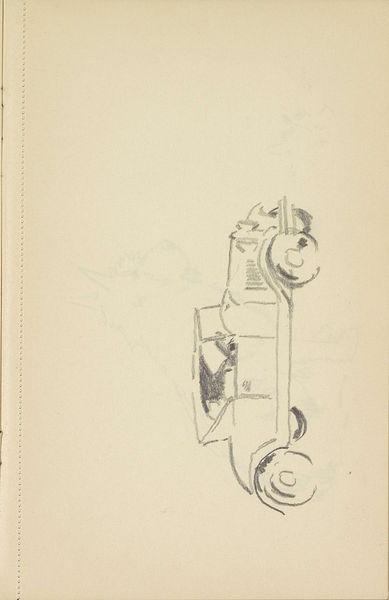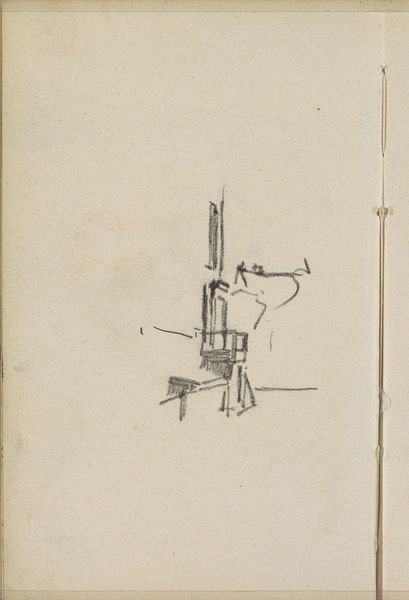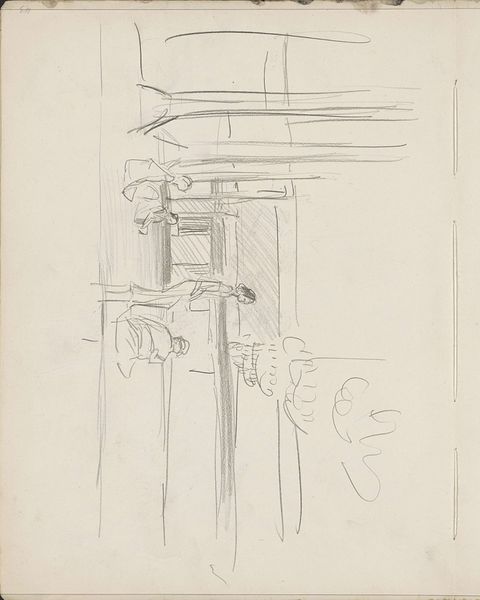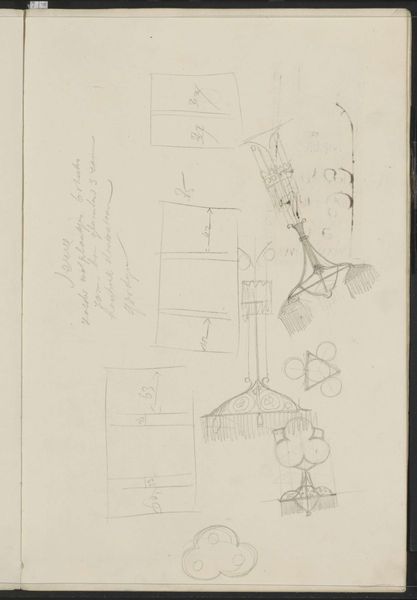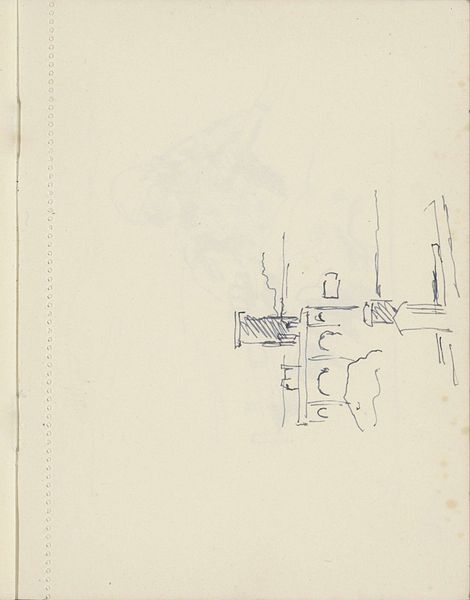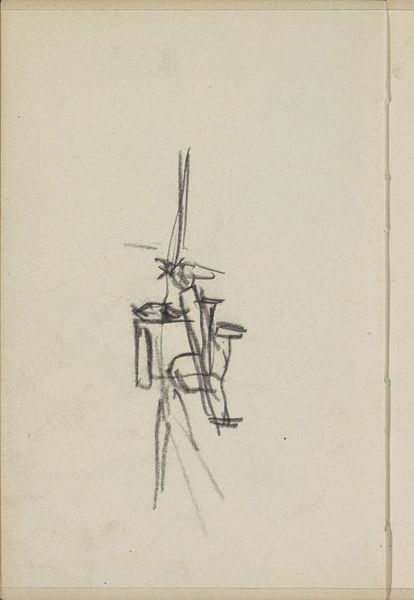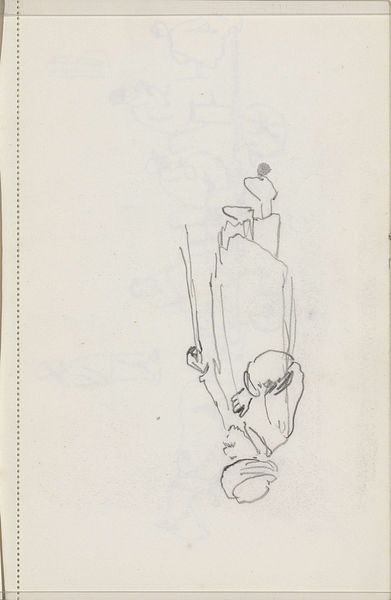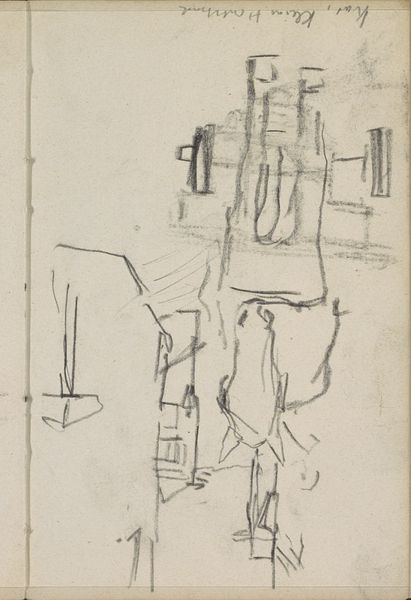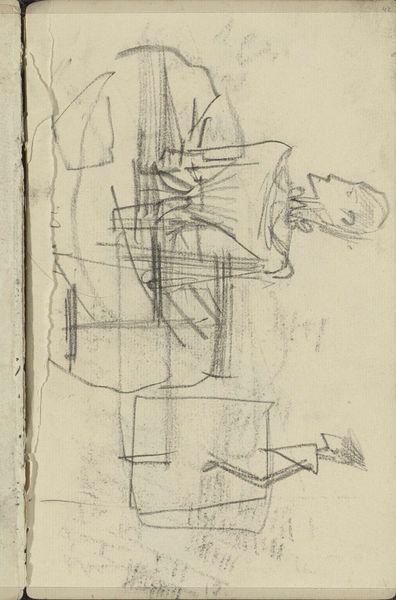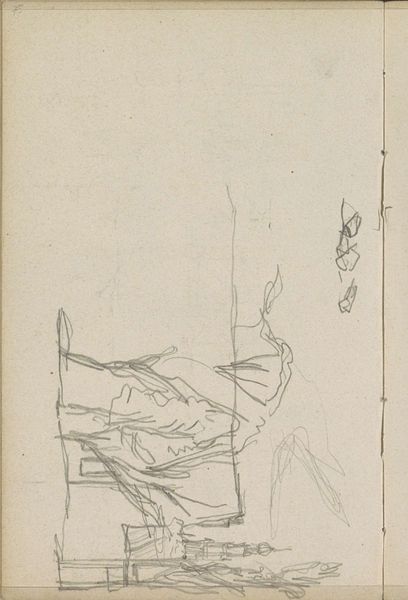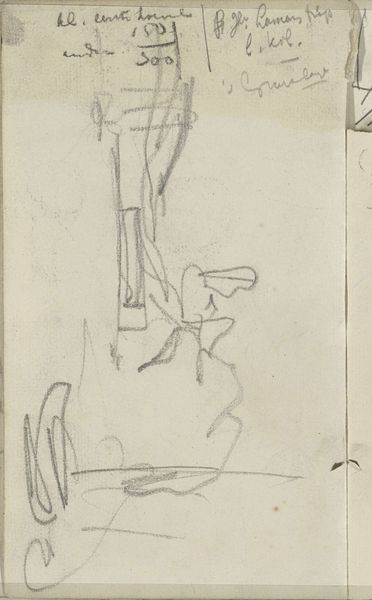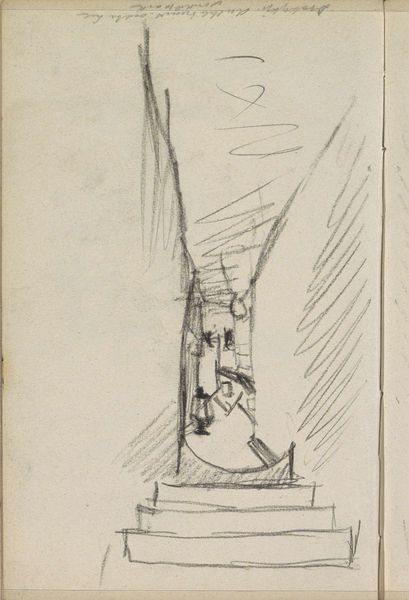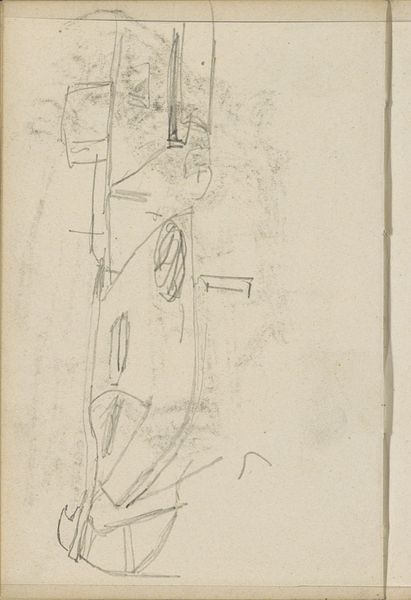
Copyright: Rijks Museum: Open Domain
Editor: Here we have Cornelis Vreedenburgh's drawing, "Bakfiets," created sometime between 1890 and 1946. It's rendered in pencil and maybe some pen. It depicts a cargo bike... I’m struck by its simplicity, how he captures the essence of this working vehicle. What’s your take on it? Curator: What I find compelling is how this unassuming sketch can be a point of entry into understanding the material conditions of urban life during that period. This bakfiets, a cargo bike, wasn't just a means of transport; it represented a shift in labor, logistics, and ultimately consumption within the city. Editor: So, you're saying that the drawing isn't just a depiction of a bike, but something more? Curator: Precisely. Consider the materials, pencil and paper – readily available, accessible tools for documenting everyday life. The artist, rather than creating a grand, imposing artwork, chose to focus on a humble vehicle that would have been used by laborers, merchants, possibly even families. The artwork questions the hierarchies and artistic notions about art and the work that’s depicted in it. Who benefited from it? How was it made, how was it distributed? Editor: It does make you wonder about the stories behind it, who relied on it for their livelihood. What sort of goods did it haul, do you think? Curator: Absolutely. Thinking about what was moved on this bakfiets allows us to explore distribution networks of the time: food, manufactured goods, and so on. What can be inferred about society by that cycle of work? Editor: I guess I never thought of a simple sketch having so much to say about labor. Thanks. Curator: And I think recognizing the dignity and significance of everyday objects, like this bakfiets, reveals hidden historical context. It shows how ordinary people contributed to urban economies.
Comments
No comments
Be the first to comment and join the conversation on the ultimate creative platform.

